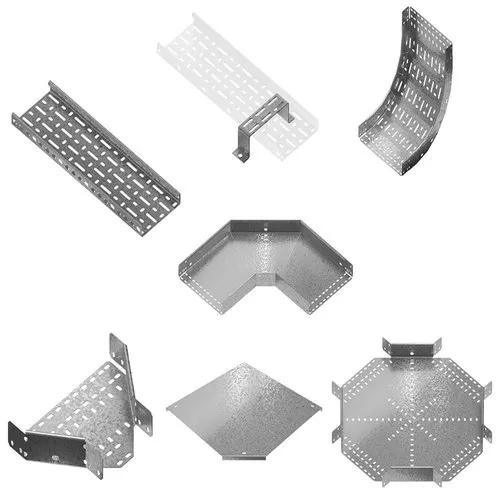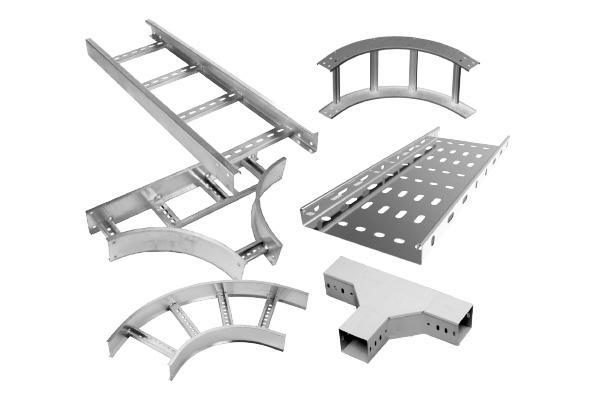Electrical cable trays play a pivotal role in the efficient organization, protection, and management of cables in various sectors including commercial, industrial, and residential projects. These versatile systems provide a structured pathway for wires and cables, ensuring safety, ease of maintenance, and adherence to electrical codes. This extensive article delves deeply into the world of cable trays, exploring the myriad sizes available, the diverse types used, their unique features, and the critical factors influencing their selection.
Cable Tray Sizes: A Detailed Overview
Cable tray dimensions are crucial to accommodate varying cable volumes and installation requirements. The key size components include:
1. Width: Cable tray widths can vary significantly from as narrow as 50mm (2 inches) for minimal cable runs up to expansive widths exceeding 1000mm (40 inches) for large-scale installations with multiple high-density cables. The width is chosen based on the number of cables, their diameter, and the clearance required between them to prevent overheating and maintain proper airflow.
2. Depth: The depth of a cable tray determines its load-bearing capacity and structural integrity. Depths range from shallow profiles around 40mm (1.5 inches) that are ideal for light loads to deep trays measuring over 300mm (12 inches) that can handle heavy-duty applications and large bundles of cables.
3. Lengths: Standard lengths of cable trays typically extend from 2 meters (6.5 feet) up to 6 meters (20 feet), although custom lengths can be fabricated according to project specifications. Modular designs allow for easy assembly, expansion, and adjustments during installation.

Exploring the Array of Cable Tray Types
1. Ladder Type Cable Trays: Characterized by parallel side rails and rungs spaced at regular intervals, ladder trays offer excellent ventilation and are suitable for most environments. They come in solid bottom or ventilated configurations, with an array of widths and depths to suit different cable loads and environmental conditions.
2. Solid Bottom Cable Trays: These trays have a continuous base plate, offering enhanced support and protection against dust, moisture, and other environmental hazards. Solid bottom trays are often preferred where increased cable support or environmental protection is needed.
3. Wire Mesh Cable Trays: Comprised of welded wire mesh, they provide maximum airflow and visibility, making them particularly advantageous for data centers and areas requiring optimal heat dissipation. Their open design allows for flexible cable routing and accessory mounting.
4. Channel Cable Trays (U-Type): Resembling U-shaped channels, these trays are ideal for light-duty applications or as supplementary supports for larger cable runs. They fit snugly in tight spaces due to their compact profile.
5. Perforated Cable Trays: A hybrid between ladder and solid trays, perforated trays feature punched holes for ventilation while providing more cable support than fully open ladder trays. This type offers both air circulation and extra cable retention.
6. Trough Cable Trays: With completely enclosed sides and bottoms, trough trays provide the utmost protection against environmental elements, chemicals, and physical damage. Commonly used outdoors and in harsh industrial settings, they can also incorporate covers for added security.
7. Adjustable/Flexible Cable Trays: Designed for complex layouts or challenging spaces, these trays can bend, twist, and adapt to any configuration. They’re perfect for navigating corners, changes in elevation, and irregular structures.

Additional Considerations When Selecting Cable Trays
Material Selection: Cable trays can be made from materials like steel, aluminum, fiberglass, or PVC. Each material has its own advantages, such as strength, corrosion resistance, non-conductivity, or lightweight properties.
Finish Options: To enhance durability and aesthetic appeal, cable trays may be galvanized, powder-coated, painted, or coated with special fire-retardant substances. Finishes help protect against corrosion and blend the trays into their surroundings.
Supporting Accessories: The efficiency and safety of cable tray systems are augmented by accessories such as brackets, clamps, splice plates, covers, dividers, and labels. These ensure secure cable mounting, facilitate proper separation and identification, and meet code compliance standards.
Fire Ratings: Some cable trays are designed with inherent fire-resistant properties or can be treated with fire-rated coatings to limit flame spread and contain smoke in case of a fire emergency.
Installation Parameters: The height and orientation of the cable tray system – overhead, wall-mounted, underfloor, or suspended – influence the choice of tray type and configuration.
Environmental Factors: Temperature, humidity, chemical exposure, and UV resistance should all be considered when choosing the right cable tray material and design.
In conclusion, the selection of the correct cable tray size and type requires careful consideration of numerous factors, ranging from cable volume and weight to environmental conditions and regulatory requirements. By thoroughly examining each aspect, engineers, contractors, and facility managers can ensure the implementation of a cable management system that is not only safe but also enhances the overall performance and longevity of the electrical infrastructure.

